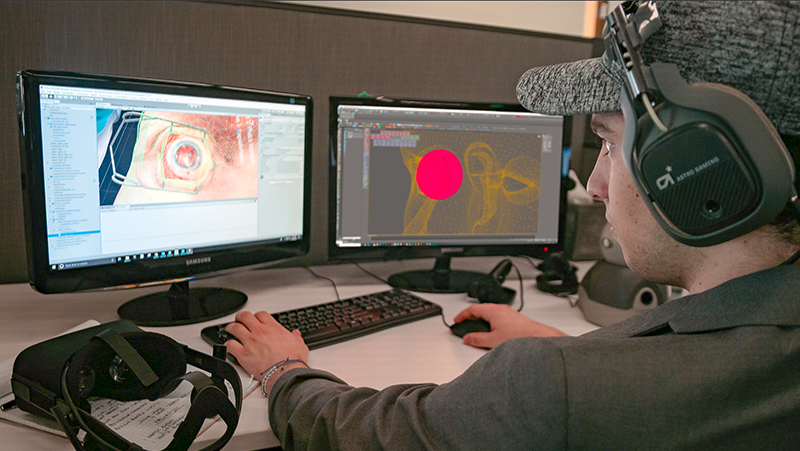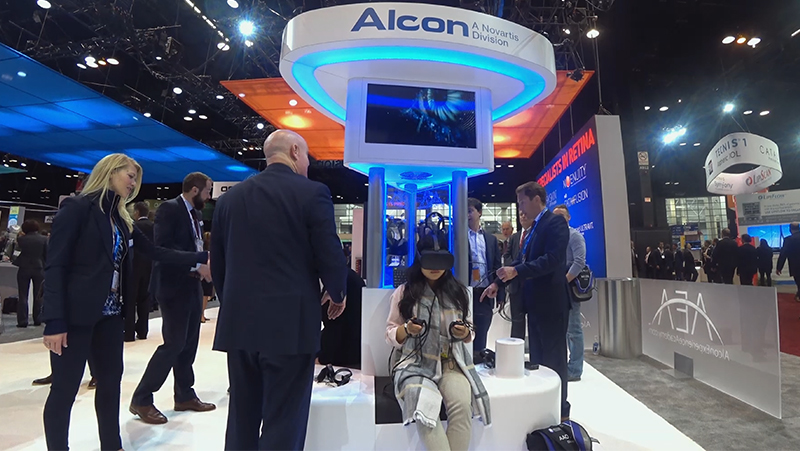Elara Case Study +
Virtual Reality & Medicine: Bringing Autodesk Virtual Reality to the Medical World
The Challenge
From the fast-paced networking of the nervous system all the way to the tiniest of chemical reactions in your brain, the human body is home to some truly beautiful and intricate systems. Understanding how each of these components operate and interact with one another can be an incredibly daunting task, especially without the appropriate modules and visual aid. Elara Systems has been using 3ds Max alongside a variety of other Autodesk solutions to create compelling narratives that highlight the unseen beauty of the medical world.

“Describing complex physiological processes can be confusing and chock full of technical jargon. It is said ‘a picture is worth a thousand words’ which can be elevated even further through video and extended reality. Complex science can be visually communicated effectively if we do the hard work of distilling concepts into content that is beautiful and didactic. Having the ability to visualize and bring a narrative to all these differing processes within the body is such a powerful tool.”
– Robert Dyce, Creative Director, Elara Systems
New Pipeline, Same Autodesk
Elara’s beautiful 3D animations are backed by a pipeline we’ve been developing for twenty years. The high quality of animation we have been able to achieve inside 3ds Max now needed to transition to real-time rendering. Unreal Engine 4 and Unity were natural inclusions to add to our arsenal, with 3ds Max’s powerful modeling capabilities continuing to provide excellent anatomical meshes to our VR experiences. The quick and adaptive nature of game engines allowed our studio to bring a new level of modularity to our lives.
Transitioning from more cinematic works to virtual reality proved to be a challenge, especially when working with a camera with six degrees of freedom. When staging our scenes in 3ds Max for traditional animations, the camera is posed and directed by us. In VR, we’re giving a lot of that control over to the user. Position and rotation now have ranges to them, greatly changing how our art team goes about framing these scenes. Traditional methods of leading the eye quickly shift towards leading a user’s entire head, changing the nature of how we use light, sound, and motion graphics to gently guide players in the right direction.

“The awesome thing about 3ds Max is its flexibility as a platform. You really can’t afford to underestimate its scripting potential, and it’s this potential that keeps broadening. The Autodesk community puts out so many tools, scripts and plugins to solve real problems. That’s the true power behind Autodesk.”
– Jeremy Gardner, Senior Technical Artist, Elara Systems
Quantifiable Results
Understanding your target demographic goes a long way to tailoring the perfect experience to your users. Creating an experience for, say, an older generation of medical professionals putting virtual reality goggles on their head for the first time, changes how you treat the complexity of your control mechanisms. By reducing the amount of controller inputs, we ensured that those in our target demographic could quickly adapt and interact with their environment. What might seem like an ‘unnecessary simplification’ to those more comfortable with VR was an incredibly important step for our development team. Creating the additional tools and fail-safes necessary to make sure anyone who runs through our experiences can appreciate them without frustration is always of the upmost importance to our team.
Many of the physicians and medical professionals who go through our experiences are putting on virtual reality headsets for the first time. Giving these physicians a chance to get up close and personal with high-fidelity renderings of the anatomy they deal with on a day-to-day is always wonderful to see. The excitement our experiences generate help to create an air of enthusiasm and potential for the future of VR.

The Future for 3D Production
Elara as a team has come a long way in our production pipeline, from making cinematic type animations to creating compelling VR experiences. As Elara continues to add software to our tool kit, Autodesk software solutions have remained at the core of our pipeline. The tools needed to start creating amazing 3d content are already out there; From new plugins and scripts, to enticing state-of-the-art visuals.
Be it the largest of breakthroughs or the smallest of optimizations, innovations in our production process occur every day. As the community continues to grow alongside its developers, the connection between 3D software and real-time engines can only continue to strengthen.
Be sure to also check out our UE4 VR Tutorial and VR Capabilities page.
